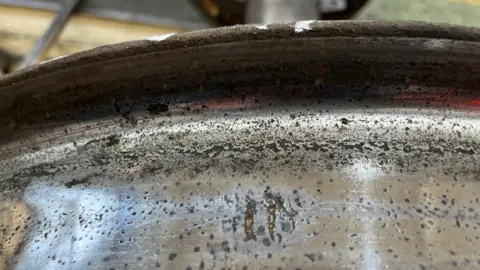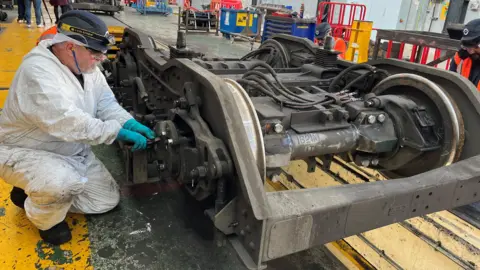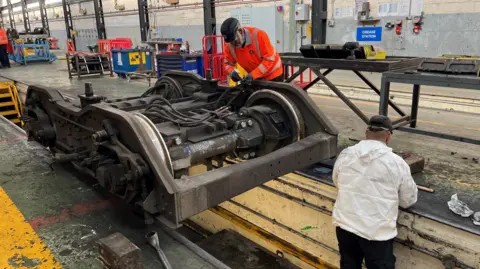Piccadilly line train fleet repairs near completion
 BBC
BBCPiccadilly line passengers should see the service return to normal by the end of January as repairs to the fleet of trains are almost complete.
The line has been suffering from long delays between trains and the closure of the line between Rayners Lane and Uxbridge stations due to heavy leaf fall.
Nearly all of the Piccadilly line trains have been affected by "wheel flats" which happen when the brakes are applied and the wheels slide causing erosion.
At the moment, 60 trains are being used on the line, 15 short of the number needed to run a full service. There are 86 trains in the Piccadilly line fleet.

No 'anti-slide' technology
The trains on the Piccadilly line are over 50 years old and do not have "anti-slide" technology on their wheels. It is not a new problem, with the line suffering from the same issue in 2016.
Every "wheel flat" has to be smoothed out by a lathe. It takes about a day to repair one train.
A new fleet with better braking technology is being tested at the moment. The whole new fleet should be in service by 2027.

Marc Perry, the fleet manager on the Piccadilly line, says wheel flats can damage tracks and are unsafe.
He said: "These markings on the wheels are caused by lack of rail adhesion.
"So as trains are running outside, if they go into the braking position and get low adhesion and the wheels lock - our trains don't have protection - and so they lock and start to slide.
"It's metal on metal and cause the flat."

Richard Jones, from Transport for London, said long-term new trains would solve the problem.
"The trains we are using currently on the Piccadilly line are 50-year-old trains," he said.
"The systems that we have on them they are very prone to getting wheel flats during what we call low adhesion conditions.
"The new trains that we will get, that we will be rolling out over the next few years, they have got those protection systems built in which will make them a lot less vulnerable to the whole issue of wheel flats."
Listen to the best of BBC Radio London on Sounds and follow BBC London on Facebook, X and Instagram. Send your story ideas to [email protected]
